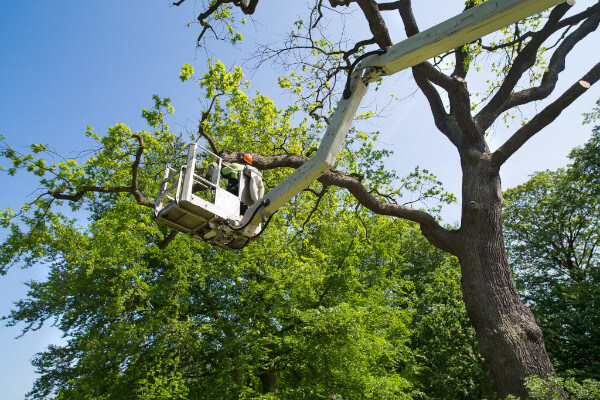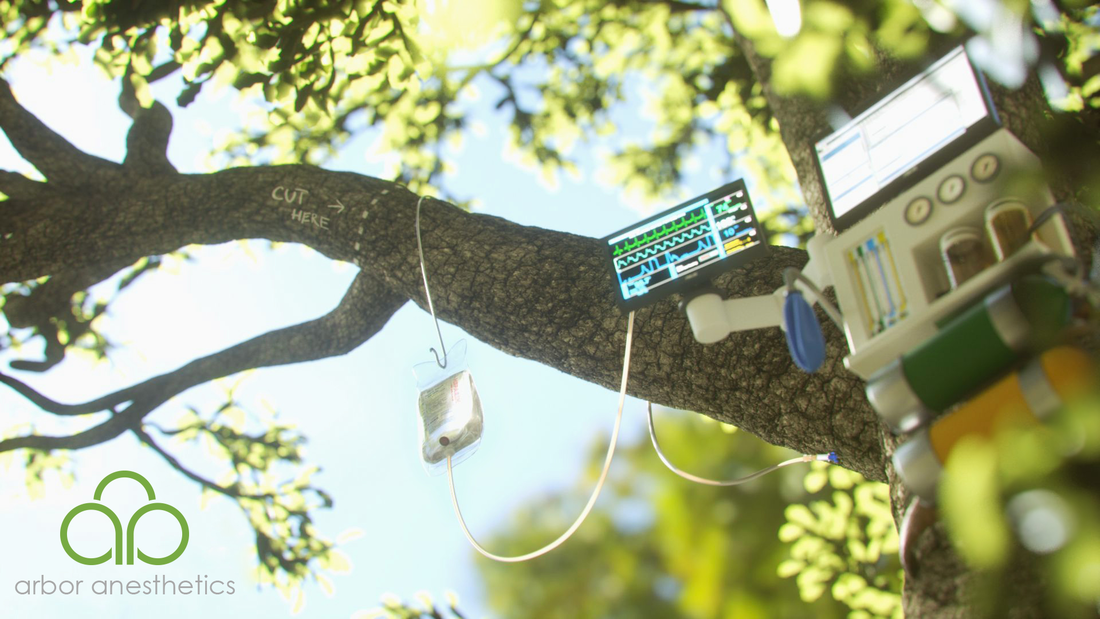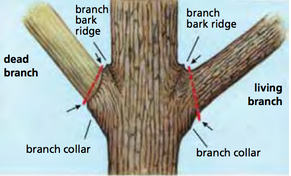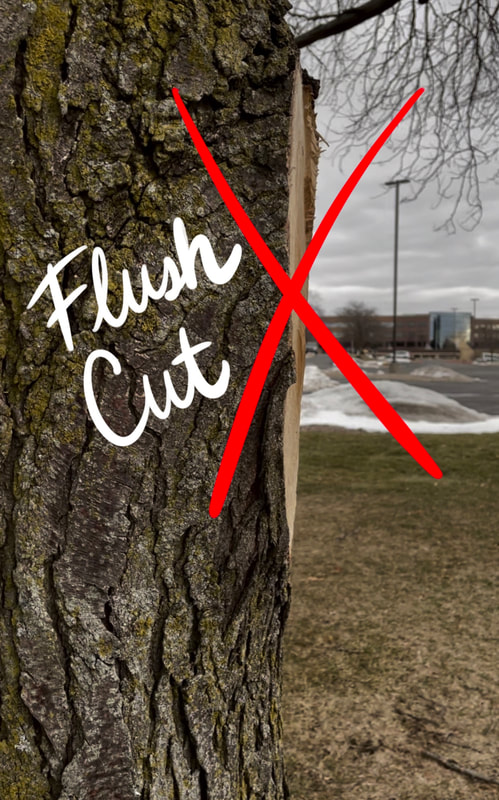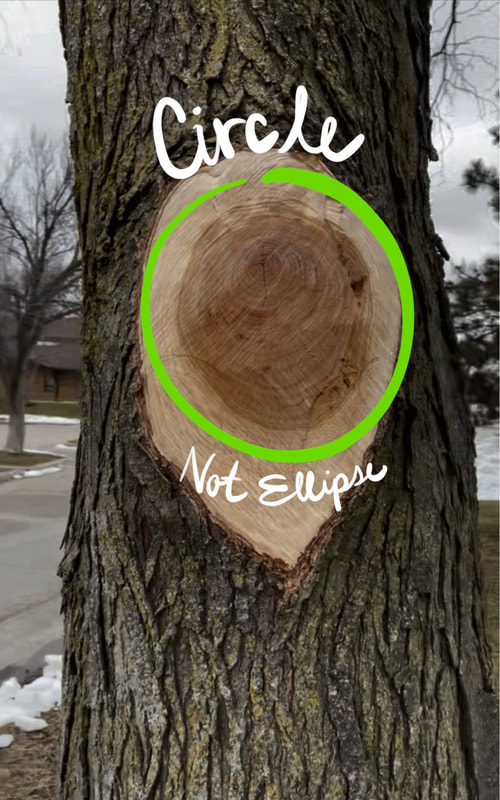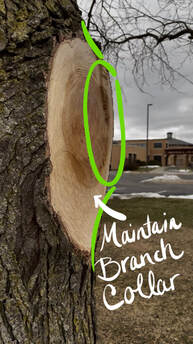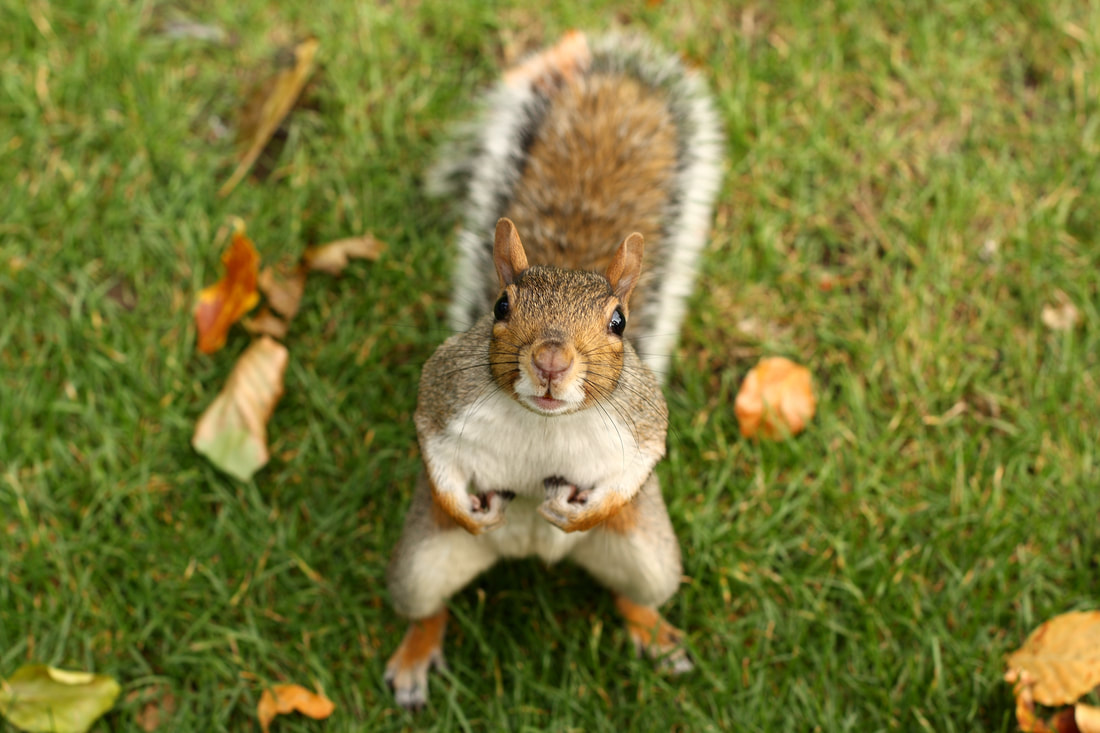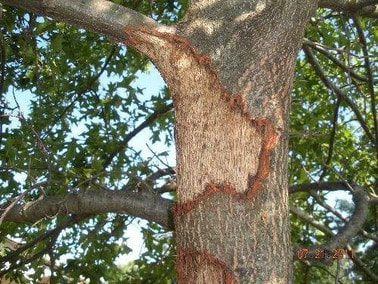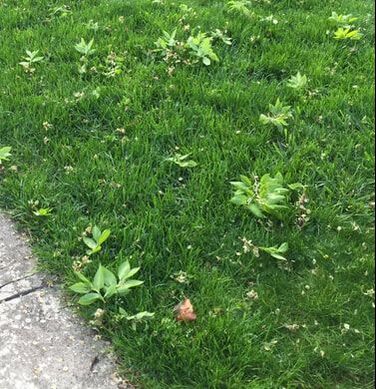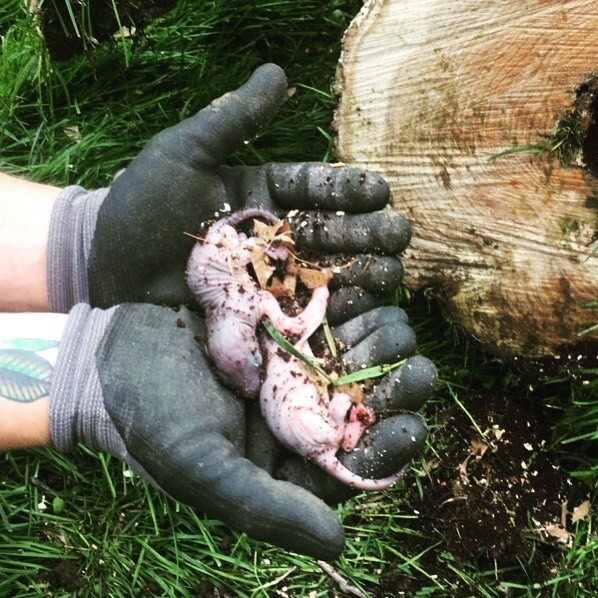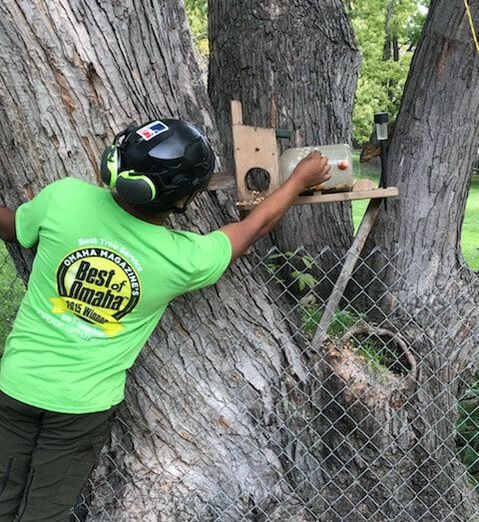Home » Tree Service (Page 2)
Category Archives: Tree Service
Best of Omaha 2022 – Omaha’s Best Tree Service
🌳 Meaningful growth for people and trees. 🌳
Did you miss our previous article…
https://www.treesforeducation.com/?p=239
EMERGENCY TREE REMOVAL IN SAN DIEGO
Rain and wind in San Diego! It’s that time of the year when the residents of San Diego either get excited about finally getting a change in the weather or they find it distressing that their “perfect” sunny weather is getting disrupted. San Diego’s storm season typically occurs during the cooler months of December through March. While our storms are mild and cannot compare to the blizzards, tornadoes, hurricanes, and tumultuous lightning storms that take place throughout much of the country, our winter weather is still capable of causing its share of damage.
Unfortunately when the rain and winds push through San Diego, it is common to see trees topple on top of homes and other structures and our city roads. It doesn’t even take much for trees to start falling around our county. Depending on the tree and its circumstances, sometimes a slight gust will give it just the right push to expose its weakness. While some arborists disagree over whether some species are more prone to failure than others, the fact is that any tree has the potential to fall without any prior indication — even seemingly healthy trees.
The leading reason for tree failure lies in the combination of the tree’s weight and root structure. The denser the canopy of the tree and/or the larger and heavier the trunk, then the more weight the roots are required to support. The roots play a vital role in anchoring a tree, and when they are compromised by variables such as urban development, fungus, disease, and age, then a massive 70-ft tree per se will end up being more sensitive to the power of the wind.
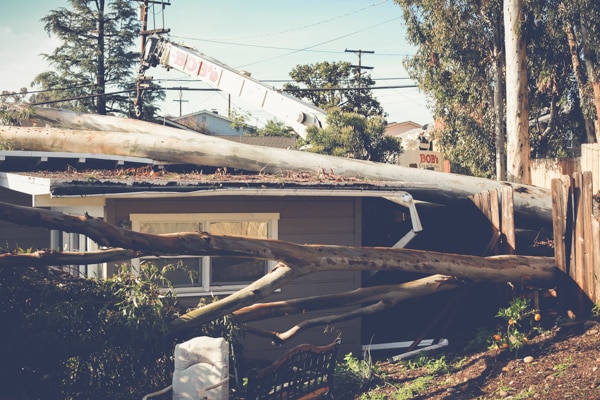
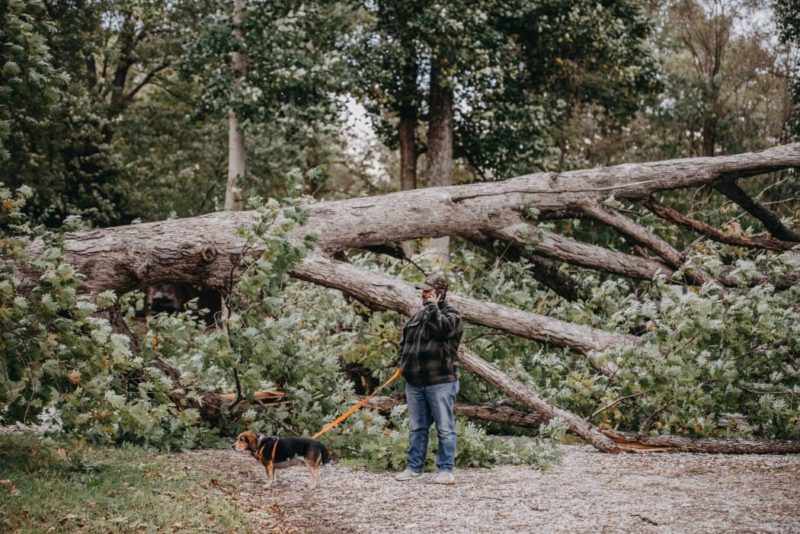
WHAT TO DO IN A TREE FAILURE EMERGENCY?
If you are an unfortunate property owner with an unexpected fallen tree, the first step you should make is to ensure that everyone in the house or building is safe and take immediate medical action if any injuries were incurred. If the breakage poses any harm, such as broken glass or broken electrical wiring, then everyone should keep their distance or evacuate until the damage is inspected by trained professionals.
Once necessary medical attention is taken, then the next step is to either contact your insurance company or LC Tree Service to have a professional come assess the situation. We are available for emergency tree removals at all hours of the day or night. We even welcome you to contact other tree service companies, just to ensure that your property is taken care of as soon as possible and that you receive the best quote and service in such a dire situation.
CHOOSING AN EMERGENCY TREE SERVICE COMPANY
It is important to call a reputable company that has experience in emergency situations and in dealing with insurance companies. Hiring a licensed and insured tree company is a necessity, since emergency tree removals tend to be more hazardous than typical tree removals. Let’s face it — most tree projects don’t require safely cutting and discarding the trunk of a massive tree that has crashed through a roof and is currently hanging out in someone’s living room. Different protocols need to be undertaken, which experienced tree companies know and can execute as safely as possible.
In an emergency tree situation, never choose a tree service company that requires an upfront payment. These types of tree removals can be extremely difficult. And shamefully, it is not unheard of for a tree contractor to give up and walk away from a job. You shouldn’t be required to pay for the job until it is completed. That way you can trust that even when the job gets tough, your tree trimmers will press on and do what it takes to get the job done.
Emergency tree removals tend to be more expensive than other tree projects. This is due to multiple reasons. Emergencies require quick and immediate action, so scheduled jobs need to be moved around in order to accommodate a more pressing job. Occasionally, tree emergency calls come in the middle of the night, and depending the the urgency of the situation, we may come out to assess the scene immediately. Then if the removal needs prompt action, our removal crew will reassemble during the night hours, if necessary, to start the job. Otherwise, jobs that have high-alert status will be performed at the very start of the day. Another factor that leads to higher pricing involves the more hazardous nature of the project. The higher the risk, the higher the cost. Certain scenarios also require the use of heavy machinery, such as cranes, which adds the to the final quote of the job.
SHOULD YOU GO WITH THE LOWEST BID?
People tend to act quickly during emergency tree situations. Most tend to hire the first tree trimmer that they make contact with, while some gather multiple bids and go with the lowest bidder. However, the lowest bid may not necessarily be the best bid. It is helpful to do some background research on the tree company and ask questions. While it doesn’t pertain to all, some tree service companies are able to charge lower rates because of the lack of proper insurance and worker’s compensation. Others may the lack emergency tree experience, therefore resulting in an underbid. In this scenario, they may either raise the quote in the middle of the project or just take a loss on the job (hashtag learning lesson).
Instead, we encourage you to go with the company that you trust the most to perform the job properly and professionally — one that is licensed, insured, experienced, and recommended by others. Sometimes that may be the lowest bidder. But sometimes — hopefully not — it may be the highest. While our emergency tree removals are higher priced, LC Tree Service likes to stay on the competitive, yet reasonable, edge with our rates.
EMERGENCY TREE REMOVAL FROM THE ROOF OF A HOME IN SAN DIEGO
DEALING WITH YOUR INSURANCE COMPANY
Contacting your insurance company is one the first steps you should make. Most recommend that you contact them first, but in many of our emergency jobs, our customers chose to contact a tree company first. We would imagine that removing an unwelcome tree guest out of their home would be first on someone’s mind before the need for placing an insurance claim. Either way, whether you choose to call a tree service company first or your insurance company, it needs to be done immediately. It is important to know what your insurance will cover and what their policy is regarding vendor payments. You will need to know whether your insurance covers both the removal of the tree from structures and the ground or if it only covers removal from structures. Then depending on your policy, payment will either be handled 1)directly from the consumer to vendor, 2)from the insurance company to consumer to vendor, or 3)directly to the vendor from the insurance company.
WHAT IF A TREE FALLS ON YOUR NEIGHBOR’S PROPERTY?
If your tree falls on your neighbor’s property, or vice-versa — your neighbor’s tree falls on your property, the same steps should be taken. Both parties’ insurance companies need to be contacted and a tree service company needs to be contacted either by you or your neighbor. Each homeowner’s insurance will cover the damage caused to their client’s property. Then the neighbor’s insurance company (if your tree fell on their property) will later file a subrogation claim with your insurance company to recoup the cost caused by your tree failure.
HELPING TO PREVENT TREE FAILURE
It is important to keep your tree trimmed on a regular basis (every 1-2 years contingent on the species). Unmaintained trees with a dense canopy have more surface area for wind push. However, certain species, like the Ficus benjamina, usually possess dense canopies — but by nature, they also grow some of the sturdiest roots in San Diego. Therefore in most cases, you would be okay having a dense ficus in your backyard, as long as it has sufficient growing room for its roots. Other trees, like the eucaplytus, should be monitored regularly when they’re at a mature height and kept well-trimmed, as their roots are more shallow than other species.
If you have a large leaning tree, especially one that is situated on a slope, it is more important to monitor it and maintain a light canopy. Having a leaning trunk with a heavy top only imposes more stress on the roots to keep it upright. Some leaning trees fare just fine, however others with a weaker root system eventually fall under the pressure. So if you have a tree that is leaning towards your home or building, or your neighbor’s property, then to stay on the safe side, it would even be wise to have it removed.
While it is easy to monitor how top-heavy a tree is, analyzing the roots is a bit trickier. Thankfully, there are signs that you can look out for.
- If mushrooms are visible at the base of the trunk or anywhere underneath the tree’s canopy, then this is a sign that fungal growth is rotting away the tree’s roots.
- If your tree is diseased or old and nearing the end of its life cycle, then the entire framework is weakening, including its root system.
- Make sure that your large mature tree has plenty of room for root growth. If it is close to any development (i.e. roads, homes, buildings, pavement) then chances are that its anchoring system is compromised, therefore increasing its chances of failure.
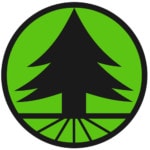
IF YOU NEED AN EMERGENCY TREE REMOVAL,
PLEASE CONTACT US IMMEDIATELY.
The post EMERGENCY TREE REMOVAL IN SAN DIEGO first appeared on San Diego Tree Trimmers – LC Tree Service.
Creating Company Culture – TCIA Podcast Featuring Jeff & Amy Grewe
Did you miss our previous article…
https://www.treesforeducation.com/?p=160
Arbor Anesthetics – Innovative Pain Management Solutions for Tree Pruning
Here are FIVE ways you can prevent harm to your trees:
- Flush Cuts – Improper Pruning Techniques
- Mulch – but not too much!
- Will cutting into a tree’s roots harm the tree?
- DIY Tree Pruning
- Tree Topping Hurts
Don’t fool around with your trees! Hire a professional, Certified Arborist, like Arbor Aesthetics Tree Service!
Flush Cuts – Improper Tree Trimming Techniques
Trees have a response to wounding, coined “Compartmentalization of Decay in Trees” or “CODIT.” A tree “walls” off decay in four layers of bark tissue, preventing decay from moving vertically, radially and tangentially. When a wound occurs naturally, the tree gets to work using its own defense mechanism to keep decay-causing fungi from spreading. When a wound occurs during routine tree pruning (yes – it’s a still a wound!), a trained arborist can take steps to ensure the tree is given its best shot at using its CODIT system.
Maintaining the branch collar is critical in tree pruning and allows the tree to form a proper callus around the wound. The illustration to the right shows a clear swelling of tissue at the branch collar as the tree is preparing to shed a dead limb naturally. Trees know what they’re doing! When we prune live limbs, we can use this as a model for where to make our cut – by not cutting into the branch collar. The branch bark ridge is not always obvious, and when it is not easy to identify the collar, we consider it best practice to come away from the trunk slightly. It would be better to leave more of a stub than it would be to cut into the branch collar.
In general (and certainly not in all cases), a proper pruning cut will result in a circular wound or as close to a circle as possible. In the photos, you can see the elliptical shape of the cut where the flush cut was made parallel to the trunk, but not perpendicular to the branch, resulting in a vertical ellipse where we can see the branch collar was removed.
If you are unsure where you make a proper pruning cut, it’s best to consult a certified arborist. You can read more about DIY Pruning in a previous blog post.
- Compartmentalization of Decay in Trees, Bartlett Tree Experts
https://www.bartlett.com/resources/compartmentalization-of-decay-in-trees.pdf - University of Iowa Extension & Outreach
https://hortnews.extension.iastate.edu/faq/when-pruning-trees-it-desirable-make-flush-cuts#:~:text=Flush%20cuts%20are%20pruning%20cuts,collar%20and%20branch%20bark%20ridge.
Squirrels & Trees, Love & Hate.
|
Today is Squirrel Appreciation Day! Squirrels are easy to love for their cunning personalities and cuteness, but they can just as easily become a nuisance when they turn to your trees for nutrition and habitat. Nevertheless, squirrels play an important role in our ecosystem and we can learn to coexist in harmony!
|
Bark stripping
Research indicates that bark stripping has a higher occurrence following a “mast year” where trees produce a bumper crop of fruits and seeds, which may correlate with a higher population of juvenile squirrels. Here is an excellent article from Ohio State University about bark stripping.
EATING TREE BUDS
tree trimming to protect young squirrels
|
In the United States, it’s best to trim your trees between November and January to avoid nesting seasons. Of course, if the tree trimming must take place during nesting, our arborists are careful not to disturb nests. Plenty of foliage should be left around the nests for their protection from predators and the elements.
Keeping squirrels out of your houseAre squirrels finding their way into your home? They can easily jump up to 10 feet from a tree onto your roof and find their way into attics, crawl spaces and chimneys to seek warmth and protection. Let your arborist know if your objective is to prevent this from happening and your tree can be trimmed to clear the house by more than 10 feet. Of course, our best advice is to find where the squirrels are entering and secure the openings.
|
Did you miss our previous article…
https://www.treesforeducation.com/?p=141
What is the best mulch to stop weeds?
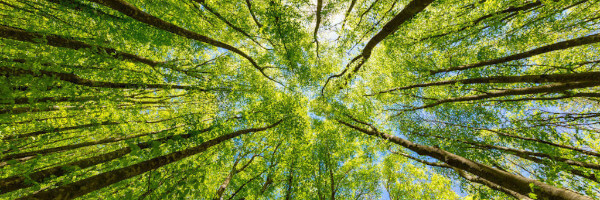
Maintaining a garden is a labour of love. But sometimes the time and effort involved can be challenging to keep up. That’s why many homeowners today look for ways to make gardening easier. Low maintenance solutions like automatic sprinklers and composting systems are just the beginning.
One of the most challenging tasks for maintaining a garden involves weed removal. Weeds can be difficult to find and remove. Even when you least expect it, there could be seeds from weeds spreading around your garden beds. These seeds could be laying dormant until conditions are right for them to start thriving in your backyard.
Weeds are often the cause of many frustrations and issues in the garden. To help you manage weeds and keep them under control, let’s explore one of the most effective methods for stopping them—adding mulch to your garden beds.
Why mulch is a great option for weed control
When you apply mulch to your garden beds you are giving your soil a protective layer. A layer of mulch effectively blocks out the sunlight and prevents it from hitting your garden’s soil. Keep this in mind as we go through how weeds end up in your garden.
Weeds tend to spread when their seeds drop and get deposited into the soil. They can quickly multiply and spread throughout your garden in no time when growing conditions are favourable for them. Luckily, one of the most essential ingredients that help the seeds of a weed grow is nourishment from the sun.
So if you effectively block out sunlight hitting your soil, you take away a major food source for the seeds of the weeds to grow. Photosynthesis can longer occur which helps give weeds the nourishment they need to grow.
How mulch can help other plants thrive
One of the major benefits of laying down mulch is the protection it provides for the rest of the plants in your garden beds. During hot and dry seasons, mulch can help retain moisture in your soil. So long after your garden beds have been watered, the mulch will retain water and keep the soil moist.
This moist environment underneath your mulch will continue to help your plants thrive in more ways than one. Mulch can also help regulate temperature. In colder climates, the mulch is also effective at retaining heat. This form of temperature control contributes to a warm environment that helps your plants thrive well before Spring kicks in.
By now you’re probably wondering why mulch doesn’t hamper the growth of your other plants if that’s what it does to weeds. The truth is, you have to have well-established plant seedlings in place before laying down mulch. This ensures your seedlings sit above the mulch so they can still absorb nutrients and energy from the sun via photosynthesis.
Mulching on a budget
Your gardening budget can definitely help you narrow down your options for garden mulch. If you don’t want to fork out money for it, there are several free options you can rely on. If you regularly prune your garden you may already have a collection of twigs and small branches lying around. These can be perfect options for your garden mulch.
Fallen leaves from the trees in your yard are also a great option. But depending on the type of leaves you choose they may compost a lot faster than your standard mulch. Other free options to consider are sawdust or wood chips leftover from any work you’ve done in the garage. If you own a big lawn at home you may also appreciate that grass clippings from lawn mowing can also be used for mulch.
Choosing the best mulch for your needs
Choosing the best mulch to stop weeds in your garden really depends on your maintenance needs and what you’re trying to grow in your individual garden beds. Ideally, you want a mulch that can block out light from your soil. That’s the most important thing to consider when choosing the best mulch to stop weeds.
The free options we mentioned earlier like leaves and grass clippings are great but they can decompose a lot faster than other varieties. Wooden chips and mulch are popular options for several reasons. They don’t decompose quickly. They can last for months or well over a year before they start to deteriorate. One of the disadvantages of wooden mulch and chips is that because they don’t break down as fast, they won’t enrich your soil and provide your plants with nutrients.
A great solution we’ve found is using a combination of compatible mulch like leaves, grass, and hay with wooden mulch laid on top of it. This option gives you the best of both mulches. You’ll get the nutrients from the breakdown of leaves and other organic matter combined with the long-lasting surface protection of wooden mulch.
Get your next batch of garden mulch from Daryl’s tree care
Do you have a few trees that need to be removed from your garden? If so, we’ve got some great news for you. These trees can be turned into mulch that you can use directly in your garden. As part of our tree removal service, we offer mulching. So the branches, tree stump and log from your tree can be placed straight into our wood chipper where it’s turned into wooden mulch.
Even if you’re not getting any tree removed, we can still supply and deliver tree mulch straight to your yard. But you will have to be patient. Our wooden mulch only becomes available for jobs that require trees to be processed through a wood chipper.
So contact us today and we’ll gladly let you know when the next load of wooden mulch will be available for you to buy. Leading up to the day when we process a tree, we’ll let you know and arrange a day and time for your mulch delivery.
The post What is the best mulch to stop weeds? appeared first on Daryl's Tree Care And Surgery.
Choosing the right tree pruning method for your tree
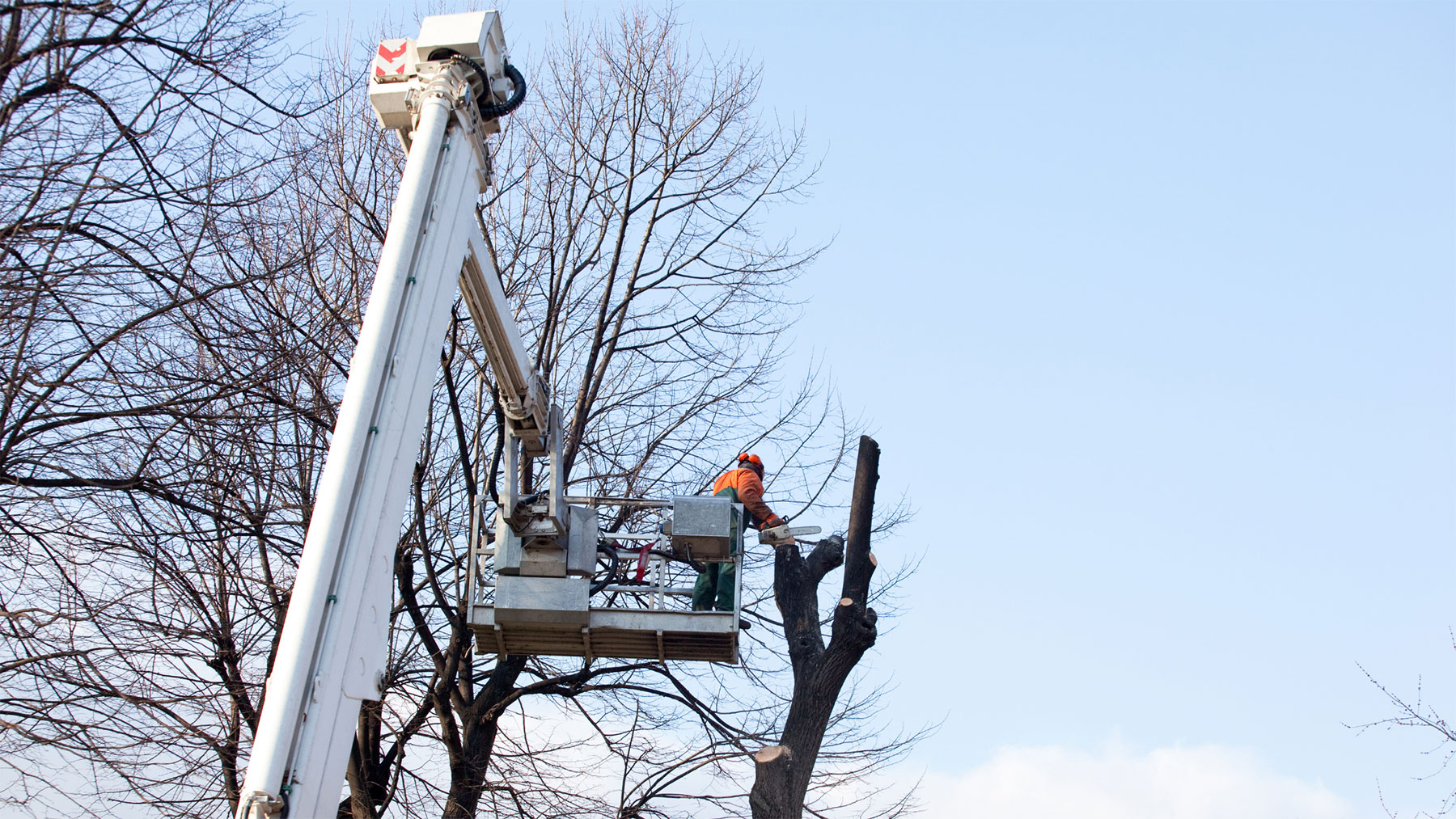
Proper maintenance is essential if you want healthy and happy trees growing in your backyard. There are many tasks you can do throughout the year to ensure your trees continue to thrive. Pest control and fertilising the soil are two options. But one task that tends to get neglected by tree owners is pruning.
Tree pruning is essential for improving your tree’s structure and encouraging newer and healthier growth. What you probably didn’t know is that there are different types of tree pruning methods that can be used for your tree. Each method has its pros and cons and it’s up to you or a professional tree care expert to choose the right one.
But before we go into the different methods of tree pruning let’s clarify the definition. Tree pruning involves selectively removing branches from a tree. This removal of branches is usually done for one of two reasons; hazard reduction and maintenance. Ultimately, tree pruning is done to support the health of the tree while protecting you and your property from any potential damage.
Knowing what your tree needs is crucial for keeping it in healthy shape. Here we’ll cover the essentials when it comes to choosing the right tree pruning method for your tree. It may need a prune for maintenance or some hazardous branches that pose a safety risk. Whatever the reason, we’ll cover them here so you can make a more informed decision about tree pruning techniques.
The different types of tree pruning
Professional arborists and tree surgeons classify their tree pruning techniques and methods by where they are removing the tree’s branches from. The area of the tree where all the main branches grow into is called the crown. The area of the crown where branches are being removed from is what professionals use to define the different types of tree pruning techniques they are doing.
Crown lifting
For this method of tree pruning, the lower branches of the crown are removed. This is a common choice for tree care professionals looking to remove branches that may be obstructing paths or roads. The lower branches of a tree tend to be bigger. So removing them results in larger wounds which can have an adverse effect on the health of the tree. The lower branches usually play a crucial role in preventing a tree from swaying in high winds. Large tree wounds can also make your tree more vulnerable to pests.
Crown thinning
This tree pruning method involves removing branches from all over the crown. There is no particular area of the crown with a heavy focus here. This method aims to increase light penetration and air circulation throughout the tree’s crown. It is important to ensure that not too many branches are removed in this process. Small diameter branches should be the main focus. Removing too many large branches from the centre of the tree can also result in poor structure. Over time, if you only have long thin branches remaining, the tree’s swaying won’t be dampened and this can put extra stress on it during windy weather.
Crown reduction
For a crown reduction, the aim is to reduce the overall size of the tree’s crown. All branches are shortened to help reduce the growth point of the tree. This is a popular option when a tree care professional is trying to reduce the space a tree stands in. For example, if a tree is growing in the corner of a backyard, there’s only a small perimeter it has for growth before the branches start obtruding over the fence and into the neighbour’s yard where they shouldn’t be. A crown reduction can help alleviate this issue.
Clearance tree pruning
Clearance pruning is another great option for trees that are physically obstructing objects around them. In some cases, a tree’s branches may be growing too close to electrical wires and other house features like the gutter. Some branches may simply be growing over the fence. This pruning method involves only removing the branches responsible for obstructing or growing over certain objects around them.
Dead wooding
This tree pruning method involves removing weak branches that are dead, dying or diseased. These branches not only affect the appearance of the tree but also can pose significant risks to safety. If these weak branches remain, they can severely affect the health of the tree. By removing these branches you enable more light to come in through the crown of the tree and support the more healthy growth of newer branches that need it the most.
Formative tree pruning
In a tree’s early years it’s important to do whatever you can to encourage healthier growth in the future. Formative pruning is one of the best ways to do this. During this process, specific branches are removed to prevent structural defects and encourage a healthier and more structurally sound form. By taking care of this process during the early stages of tree development you can help eliminate the need to carry out other tree pruning tasks in the future.
Selective tree pruning
This process of tree pruning is usually done purely for aesthetics. Some branches can have a negative effect on the look of a tree. When a large branch grows out further than others it can throw off the shape and balance of the tree. Ask a professional tree arborist to do this for you, and they will ensure the process is done in a way that won’t diminish your tree’s overall health.
Weight reduction
Throughout a tree’s life, it can start to grow branches that are over-extended, or very end-heavy. When a branch becomes too heavy it can become a safety issue. Weight reduction tree pruning is usually down for lateral branches. Lateral branches are those which grow off the main trunk of the tree. A weight reduction tree prune will help improve the safety of your tree and reduce the risk of weak branches falling off it.
Making the right choice for your tree
Now that you know of the most common tree pruning techniques, it’s time to diagnose your tree. Can you spot any structural issues? Look out for warning signs like dying or lateral branches that have outgrown their welcome. If you’re not confident about diagnosing your tree’s issues then why not call in the experts?
Here at Daryl’s Tree Care, we have a team of qualified and experienced tree arborists that can diagnose any issues your tree may have. With careful consideration, they will choose the right tree pruning techniques for your tree. They understand how important it is that your tree continues to thrive without being a safety risk to your or your neighbours. So if you’re concerned about the safety of your tree then why not give us a call? Our tree care experts can inspect your tree and provide you with a quote.
Call our professional arborists today for a tree pruning quote on 9897 4418.
The post Choosing the right tree pruning method for your tree appeared first on Daryl's Tree Care And Surgery.
Hawthorn Trees – Crataegus monogyna
Hawthorn trees are commonly found in scrub, woodland, and hedgerows throughout the UK where it is native. They grow in the majority of soil types but they fruit and flower best when they are positioned in full sunlight.
Hawthorns have many common names including May tree, one-seed hawthorn, whitethorn and common hawthorn. Its Latin name is Crataegus monogyna and it belongs to the Rosacea family of trees.
The common name “May tree” is used as this is the month when the Hawthorn is in full bloom and is a sign that the seasons are changing from spring to summer. The hawthorn’s light green leaves are among the first to appear in springtime and explode with pretty white or light pink blossom during May. Hawthorns are often teeming with wildlife including many birds and bugs.
In winter, hawthorns can be identified by their spines that emerge at the same place as the buds. The blackthorn (Prunus spinosa) is different as its buds are on the spines themselves.
What do Hawthorn trees look like?
Hawthorn leaves measure around 6 cm and have deeply toothed lobes that cut to halfway to the mid-rib. The leaves turn a shade of yellow in autumn before they fall. The hawthorn tree is hermaphrodite (meaning that both the female and male reproductive parts are inside the flowers). The flowers have a strong scent and are white or light pink. They grow in clusters that are flat on top and each flower has five petals.
When hawthorns are mature, they can measure up to 15 metres tall. They are often characterised by their thorny habit, which is dense but they sometimes grow with a single stem as a small tree. The bark of the hawthorn is a grey-brown colour and is full of knots and fissures.
The twigs are brown, slender, and thorny. Oftentimes, the hawthorn creates a hybrid with the Midland hawthorn which is also native in the United Kingdom (Crataegus laevigata). It can be difficult to tell the two species apart. One difference is that the Midland hawthorn has two stigmas in the flowers while the common hawthorn has only one.
Another difference is in the fruits: the common hawthorn fruit has one seed but the Midland hawthorn fruits bear two. Finally, the Midland hawthorn’s leaves are cut deeper.
Where else are Hawthorn Trees Found?
The hawthorn is not only native in this country. You can also find it in Asia and North America.
Hawthorn History
The hawthorn is a pioneer species, often forming a large area of scrub on land that is not in use or neglected. This tree is the original hedgerow and has been associated with enclosed spaces and boundaries throughout history. Hawthorn was so frequently used as a hedgerow that in Anglo Saxon times, the word ‘haga’ meant both hawthorn and hedge. Many hedges were grown to make enclosures for deer.
One reason for their popularity as a hedge is that they are fast-growing and hardy. In the one hundred years from 1750, two hundred thousand hawthorns were planted in the UK to enclose land for cattle and sheep grazing.
The hawthorn also has a history in myth, legend and folklore. It took on an important role in the Pagan rituals associated with May Day when the flowers are at their best. It is a symbol of fertility and was the Maypole’s ancestor with its flowers and leaves forming garlands for the day too.
Often, fields retain one single hawthorn tree to be kept as a ‘fairy thorn’. There are also superstitions associated with this tree with some people believing it is bad luck to bring the hawthorn’s flowers inside the home. Legend has it that if one was to bring the hawthorn blossom into the home, illness and death would follow. Also, in medieval times, it was said that hawthorn blossom had the smell of the Great Plague. This is not surprising to us nowadays however, as botanists have now discovered that hawthorn blossom contains trimethylamine, a chemical that is one of the first to form in animal tissue when it decays!
Uses of Hawthorn
Besides being used as a hedgerow there are many other uses of the hawthorn tree. The flowers, berries and leaves are all used to produce medicines and one main use is in the treatment of high blood pressure. The properties of the hawthorn widen the blood vessels and help to increase the flow of blood around the body. Another use is indigestion, stomach cramps and anxiety.
The timber of the common hawthorn has a light brown colour with a fine, hard grain. The hawthorn is used to make veneers, cabinets, tool handles, boat parts and boxes. It is also good as charcoal and firewood because it burns at a high temperature.
Finally, young hawthorn leaves, young flowers and flower buds can all be eaten. You can put them in root salads or green salads. It is also possible to eat raw haws but they can trigger mild upset stomachs. The haws are used to make kinds of ketchup, wine, and jellies.
Place names linked to the Hawthorn in the United Kingdom
There are many place names in the UK that are linked to the hawthorn tree. These include:
- Hathern in Leicestershire (meaning ‘hawthorn’)
- Hatherdene in Hampshire (meaning ‘hawthorn valley’)
- Appleton Thorn in Cheshire
- Woodmansterne in Surrey (meaning ‘thorn of the edge of a wood’)
Hawthorn Trees and Wildlife
The hawthorn is a great wildlife tree. It provides food for lots of different species including yellow-tail moths, Duke of Burgundy butterflies and hawthorn shield bugs. Lackey moths and magpies also use the hawthorn for food. Additionally, Small Eggar moth larvae develop webs on the hawthorn leaves and grow into caterpillars. The flowers’ sweet smell is attractive to flies too, which is notable during the spring. Finally, small animals like wood mice as well as many birds like thrushes will eat the hawthorn fruit during the winter. Small birds also like the safety of the protective thorny branches for their nests.
Good Points About Hawthorn Trees
- Hawthorns are one of the few to tolerate being exposed.
- A hawthorn hedge is impenetrable.
- Hawthorns grow in well-drained soil and also even in a large tub.
- As well as being a hedge, hawthorn can be grown into a standard tree.
- The flowers are beautiful.
Negatives About Hawthorn Trees
If you have to say something bad about a hawthorn it would be that its spines are really sharp. Even when twigs are dead they keep hold of their thorns and they are strong enough to puncture car tyres.
In terms of conservation and threats, hawthorns are prone to the bacterial disease fireblight, gall mites and aphid attacks.
Article was written by Conner D.
Article Source: https://www.graftingardeners.co.uk/hawthorn-trees-crataegus-monogyna/
Gift of Beautiful Trees 2020 Complete!
Story continues below…
When Jeff and I review nominations, we use a loose scoring matrix to help us narrow down the projects based on the personal story that is submitted, how dire the need is in terms of safety, and whether or not our company is well-suited for the project with the resources and equipment we have.
When we came across this struggling Cottonwood, we knew immediately that we HAD to do something. This tree was full of dead limbs over the street, sidewalk, driveway and house where the nominee and her daughter frequented. The result is beautiful and the tree is now an incredible historical feature and anchor point of the neighborhood – not an eyesore or hazard. The nominee was so grateful to not have to worry anymore.
Our second selected nomination was an anonymous submission, tipping us off to a family who had weathered extensive and very unexpected health challenges in 2020. The husband, Nick, showed up for his family in big ways and worked long, hard hours to provide for them during this time. When we saw just how many trees were in their backyard that needed attention, we were anxious to help. We visited a couple of months later to grab a photo after the trees had leafed-out and were so thrilled with the results of their beautiful, park-like backyard.
As always, these projects are always about so much more than trimming and removing trees. We’re showing up and serving our community (one of our company values!) and fulfilling our mission of Creating Connections through Trees. We’re sharing our gifts however we can, and we are thankful to our community for supporting our business so that we can support our community in return.
